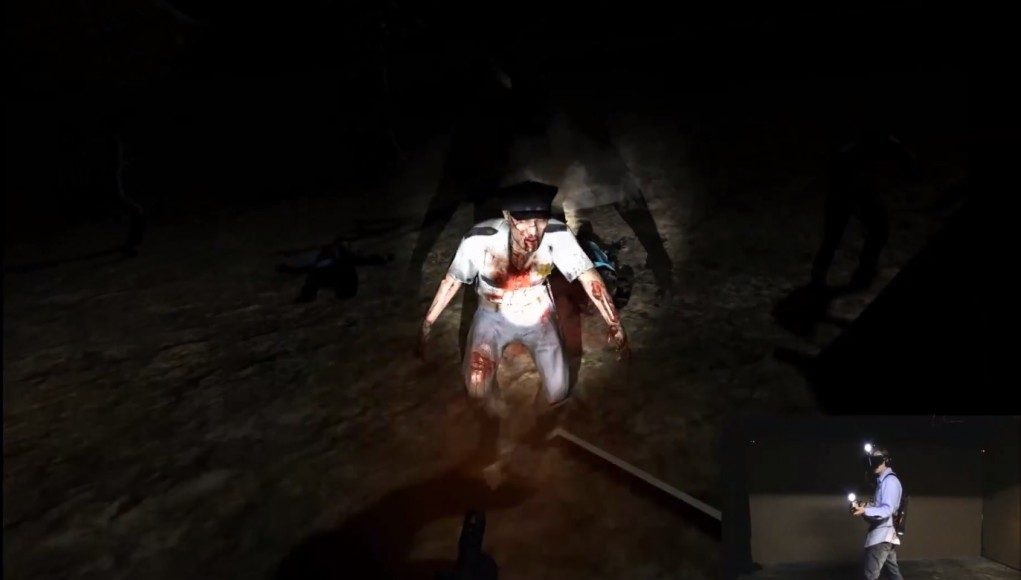It looks like we’ve got a new challenger to Project Holodeck. ‘Inversion Project’ by Zero Latency Media is a low-cost, portable VR environment that allows players to crouch, jump, and move around a physical space while having that movement mirrored in a virtual reality game. The developers are showing off an early demo using the environment with a game called Zombie Fort: Smackdown.
A little less than a year ago, I told you all about VIRTSIM, a professional virtual reality environment that gamers craved, but couldn’t have. Since that time we’ve seen several projects aimed at making VIRTSIM’s VR capabilities accessible to gamers. Amazing what kind of progress we’re seeing in this space in such a short time.
Inversion Project is the latest example of a low-cost VR environments made for gaming.
Creator Tim Ruse tells me that the Inversion Project system combines motion capture and IMUs to create a 360 degree tracking system that detects motion at 60Hz. Like Project Holodeck, the Oculus Rift is used for the head mounted display, and the necessary computer is housed in a backpack worn on the player’s back.
Inside the Zombie Fort: Smackdown demo game, the player can move around the virtual environment to avoid zombies that come charging into the play space. The player’s gun-prop is tracked and can obviously be used to gun the zombies down. The available physical walking space is outlined inside the game to prevent players from running into walls.
Since the video above, Ruse tells me that the game space has been doubled. The system has also been tested with a play space up to 10×10 meters (~33×33 feet).
Ruse says that the next step is to introduce multiplayer, with fully embodied avatars so that players can inhabit the same physical and virtual space. This is particularly exciting as I’ve been waiting patiently to blast enemies away while standing back to back with a friend in VR (fingers crossed for multiplayer in Crashland!).
Ruse tells me that they expect to have ready a public demo of the Inversion Project system at the start of 2014 in Melbourne, Australia. We’ll be watching closely for more!
Between Project Holodeck, VRcade, and now Inversion Project, the competition is heating up for full motion VR environments. Which has the most promise?







